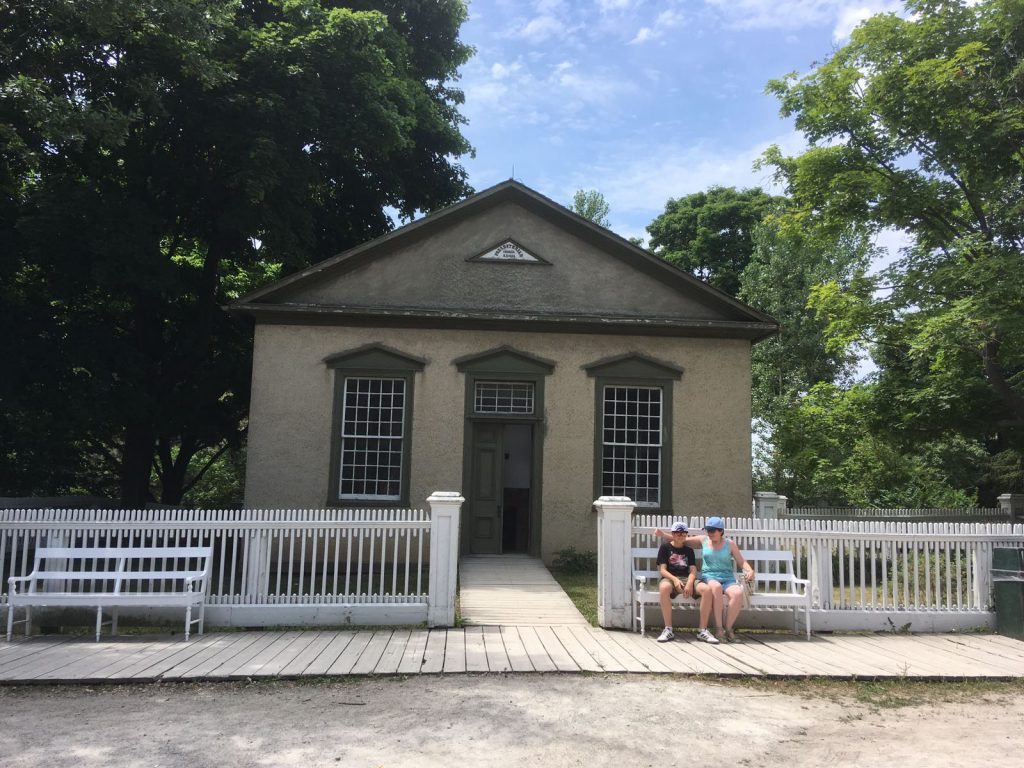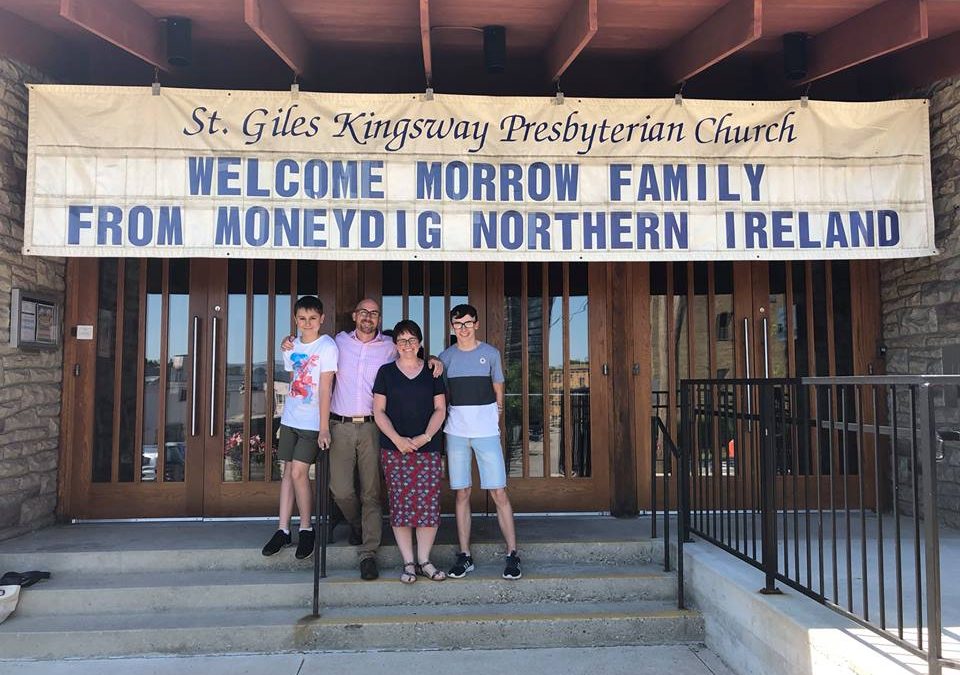Yesterday, (Friday 13th July), Julia, Robin, Jacob and I visited the Black Creek Pioneer Village in Toronto. For those reading this back home in Northern Ireland, Black Creek Pioneer Village is very like the Folk park at Cultra or the Ulster American Folk park in Omagh. It is a look back into Canadian history, which means it is also a look back into Irish history because so much of Canada has been shaped by both British Imperialism and Irish Emigration.
One of the Pioneer Village exhibits is a house and shop owned by a shoemaker from Fermanagh called Davy Flynn who emigrated during the potato famine.
In Davy Flynn’s house we learned how Canada was divided up among the pioneer settlers. It was noticeable that each plot was incredibly uniform when viewed on the map. It was also noticeable how the native indigenous people were simply removed from their land to make way for settlers.
Few would argue at the injustice of someone’s homeland being taken away and whole groups of people being forcibly relocated, away from the rivers and hunting grounds that were a way of life and means of survival for generations. Today Canada is trying to acknowledge that wrongs were committed, and apologies have been issued to the indigenous people. There is an attempt to retell Canada’s history in a way that includes not only the story of the settlers but the people who were already here.
History is important not only because we can learn about the past but because we must learn from the past.
While at Black Creek Pioneer Village we also visited another example of Irish influence on Canada, a Presbyterian Church and the accompanying manse.

The church was built in 1856, Moneydig Presbyterian Church was built in 1836. This set me thinking about how the church I worship in is older than the church I visited in the Canadian Museum!
I couldn’t help but feel a little sad at the thought of a church building being reduced to a museum piece. Surely something somewhere has gone wrong, surely the church was meant for more than just a nostalgic look back at the past. The church should be a vibrant living entity that points to a vibrant wonderful future, not a nostalgic look at the past.
10 So he took me in the Spirit to a great, high mountain, and he showed me the holy city, Jerusalem, descending out of heaven from God. 11 It shone with the glory of God and sparkled like a precious stone—like jasper as clear as crystal. Revelation 21: 10-11
The question then is how does the church regain her vision of the future?
Then if my people who are called by my name will humble themselves and pray and seek my face and turn from their wicked ways, I will hear from heaven and will forgive their sins and restore their land. 2 Chronicles 7:14
The church will only ever regain her vision for the future when we regain God’s vision for us. If the church is to become more than just a museum piece, then we must humble ourselves before God in prayer seeking his face. This is more than just calling another prayer meeting, it is about us as individuals and families praying together. This is the lifeblood of the church. This is how we learn from the past and prevent the church becoming part of the past.
